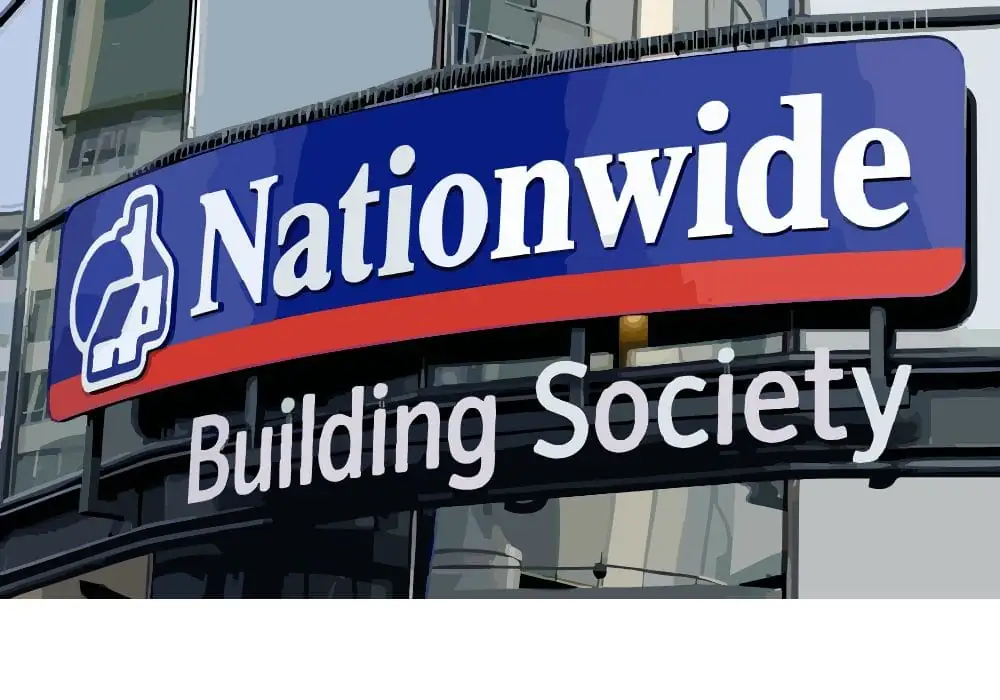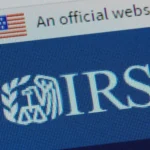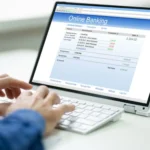- What is Early Warning?
- Why is Early Warning Important?
- How Does Early Warning Work?
- 1. Collecting Data
- 2. Analyzing and Scoring
- 3. Sharing Information
- 4. Fraud Prevention
- 5. Consumer Support
- Early Warning Services History
- What Can You Do with Your Early Warning Report?
- Challenges and Criticisms
- Why You Should Trust Early Warning Services?
- Frequently Asked Questions (FAQs)
- 1. How do you get your Early Warning report?
- 2. Can Early Warning affect your ability to open a bank account?
- 3. Is Early Warning the same as a credit report?
- 4. What should you do if there’s an error in your report?
- Wrapping It Up
Trying to open a bank account to manage your finances?. But what if the bank rejects your application? because a report from Early Warning flagged something in your banking history.
Frustrating, right? The good news? Understanding Early Warning can help you navigate this murky financial terrain. So without any further delay, let’s tap into the article.
What is Early Warning?
Early Warning is a financial technology company backed by seven major U.S banks — Bank of America, Capital One, JPMorgan Chase, PNC Bank, Truist, U.S. Bank, and Wells Fargo.
It’s not a bank, nor a credit bureau like Equifax or Experian. Instead, it’s a consumer reporting agency zeroed in on banking activity.
You can deem it as a behind-the-scenes watchdog, helping banks make informed decisions.
So what does it do, exactly? Early Warning collects data from thousands of financial institutions. This data includes your account activity, balances, and any red flags like fraud or unpaid overdraft fees.
It then provides this information to banks to assess risk. Ever heard of Zelle? That’s Early Warning’s most famous product—a peer-to-peer payment app used by over 2,200 banks and credit unions.
But its role goes far beyond Zelle, diving deep into fraud prevention and risk management.
The key takeaway? Early Warning isn’t about credit scores. It’s about your banking history—how you manage checking and savings accounts.
And it’s critical for banks deciding whether to open an account for you or accept your check.
Why is Early Warning Important?
When you apply for a new checking account, the bank pulls your Early Warning report. If it shows a history of bounced checks or unpaid fees, they might deny your application. Harsh, but true.
Early Warning’s data helps banks spot potential risks before they commit. It’s not just about account openings, though. It also helps detect fraud when someone tries to open an account in your name.
Here’s the flip side. You have rights. Thanks to the Fair Credit Reporting Act (FCRA), you can request a free copy of your Early Warning consumer report once every 12 months.
No fee, no hassle. Reviewing this report is like getting a health checkup for your financial life. It lists your bank account numbers, account statuses, activity over time, and even which institutions have peeked at your data in the last 36 months.
Spot an error? You can dispute it, and Early Warning must investigate.
Why should you care? Because inaccuracies in your report could block you from opening a bank account or even lead to a closed account.
Checking your report ensures everything’s accurate. Plus, it’s a shield against identity theft—a growing issue, with consumers losing over $12 billion to fraud in 2024, a 25% rise from the previous year.
How Does Early Warning Work?
Early Warning functions like a data hub, collecting and analyzing banking information to help financial institutions make smart decisions. Here we’ve outlined everything that it does. Let’s get into the nuts and bolts.
1. Collecting Data
Early Warning pulls data from thousands of banks and credit unions across the U.S. This includes:
- Account openings and closures.
- Overdrafts or unpaid fees.
- Suspicious activities, like potential fraud or identity theft.
- Transaction patterns, such as frequent large transfers.
This data comes from the institutions themselves, creating a massive database of consumer banking behavior. It’s not just about you—it’s about millions of account holders, painting a broad picture of financial activity.
2. Analyzing and Scoring
Once the data’s collected, Early Warning processes it. One key tool? The Early Warning Deposit Score. This isn’t a credit score but a measure of your banking reliability. It considers factors like overdraft history or account closures. Banks use this score to decide if you’re a safe bet for a new account. The higher your score, the better your chances.
The process isn’t perfect, though. Errors in data collection—like a bank misreporting a paid-off overdraft—can lower your score unfairly. That’s why checking your report is crucial.
3. Sharing Information
Early Warning doesn’t keep the data to itself. It shares reports with participating financial institutions. If you apply for a checking account, the bank might request your Early Warning report to check for red flags. Similarly, if a retailer refuses your check, they might be using Early Warning’s data to spot risks.
This sharing isn’t random. It’s tightly regulated under the FCRA, ensuring your data isn’t misused. And here’s a perk: Early Warning’s reports help banks catch fraud early, protecting you from scams.
4. Fraud Prevention
It’s worth noting that, in 2024, consumers lost over $470 million in just text message scams.
On the other hand, if you use the Early Warning service, you can keep people from trying to cash a fraudulent check or open an account with stolen credentials.
You get bank alerts before anything suspicious occurs. For instance, Zelle works with Early Warning’s fraud detection to provide secure money transfers to its users.
So, if a transaction looks suspicious, the system might flag it for review, saving you from a potential headache.
5. Consumer Support
If you’ve got an issue with your report? Early Warning offers ways to fix it. You can request your consumer report by calling 1-800-745-1560 or visiting their website.
Got spot errors?—like an account listed as unpaid when you settled it—you can file a dispute. The platform must investigate and correct inaccuracies, free of charge.
This process builds trust in you, as it’s not only about protecting banks but also about giving you control over your financial narrative.
Early Warning Services History
Early Warning wasn’t always the fintech giant it is today. Its story starts in the 1990s, when several banks teamed up to tackle deposit losses. They created a system to share data on risky accounts, laying the foundation for Early Warning. Over time, it expanded its offerings:
- 1990s: Launched check deposit and payment validation tools.
- Early 2000s: Added fraud detection and data-sharing services.
- 2017: Introduced Zelle, revolutionizing peer-to-peer payments.
- Today: Offers advanced tools like multifactor authentication and identity verification.
This evolution shows Early Warning’s knack for adapting. It’s not only about catching fraud but also about streamlining how banks and consumers interact.
What Can You Do with Your Early Warning Report?
Got your report? Great. Now what? Here’s a quick guide to making the most of it.
- Review for Accuracy: Check every detail—account numbers, balances, and statuses. Errors happen. A bank might report an unpaid fee you already cleared. Spotting these mistakes early saves you trouble.
- File Disputes: If something’s wrong, contact Early Warning. They’re required to investigate and fix inaccuracies. This could mean the difference between opening a new account and being denied.
- Protect Against Fraud: Your report lists who’s accessed your data. If you see unfamiliar institutions, it could signal identity theft. Act fast to secure your accounts.
- Consider Second-Chance Accounts: Denied a standard checking account? Some banks offer second-chance accounts for those with rocky banking histories. They come with limitations, but can help you rebuild.
The best part? Requesting your report won’t hurt your credit. It’s a simple step to stay on top of your financial health.
Challenges and Criticisms
No system’s perfect. Early Warning has its critics. Some argue its reports can unfairly penalize consumers for past mistakes—like a single overdraft years ago.
Others point out that data errors, while fixable, can cause real-world headaches, like denied accounts or closed checks.
There’s also the privacy angle. Sharing your banking data with thousands of institutions might feel invasive. But Early Warning operates under strict FCRA guidelines, ensuring your data’s handled responsibly.
The solution? Stay proactive. Regularly check your report, dispute errors, and keep your banking history clean. It’s not always easy, but it’s worth it.
Why You Should Trust Early Warning Services?
In a world where fraud’s on the rise—$12.5 billion lost in 2024 alone—Early Warning’s role is critical. Banks need reliable data to protect themselves and their consumers.
Apart from fraud detection, you can correct your errors from your banking history and transfer cash securely.
Frequently Asked Questions (FAQs)
1. How do you get your Early Warning report?
To get your Early Warning report, call 1-800-745-1560, or you can head to Early Warning’s website. There is a single report limit every 12 months for free users.
2. Can Early Warning affect your ability to open a bank account?
Yes. Banks use Early Warning reports to check your banking history. If there are issues like unpaid fees or fraud flags, you won’t be able to open a bank account.
3. Is Early Warning the same as a credit report?
No. Early Warning revolves around your banking activity—checking and savings accounts—not credit. It’s another type of consumer report.
4. What should you do if there’s an error in your report?
You can file a dispute with Early Warning. They will look into the issue and correct inaccuracies, usually within 30 days, for free.
Wrapping It Up
Early Warning Services might not be a household name, but it’s one of the best platforms to secure your financial life.
From preventing fraud to helping banks decide on your account, it’s a quiet force in the background.
Best of all, it gives you the flexibility to request your report, check for errors, and dispute inaccuracies. All you need to do is stay informed.
With Early Warning, you’re not just reacting to banking decisions—you’re taking charge of your financial story.




